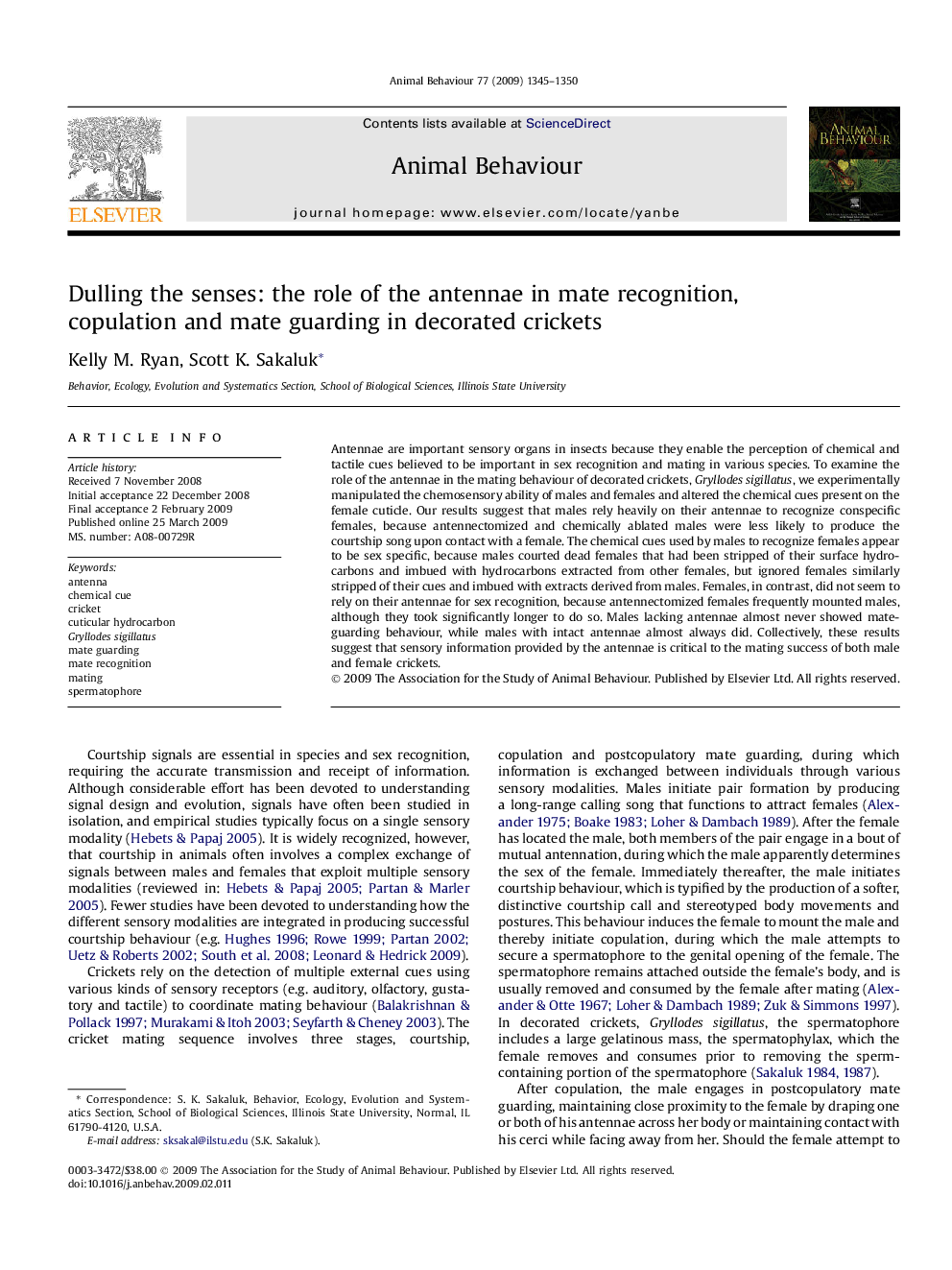| Article ID | Journal | Published Year | Pages | File Type |
|---|---|---|---|---|
| 2417653 | Animal Behaviour | 2009 | 6 Pages |
Antennae are important sensory organs in insects because they enable the perception of chemical and tactile cues believed to be important in sex recognition and mating in various species. To examine the role of the antennae in the mating behaviour of decorated crickets, Gryllodes sigillatus, we experimentally manipulated the chemosensory ability of males and females and altered the chemical cues present on the female cuticle. Our results suggest that males rely heavily on their antennae to recognize conspecific females, because antennectomized and chemically ablated males were less likely to produce the courtship song upon contact with a female. The chemical cues used by males to recognize females appear to be sex specific, because males courted dead females that had been stripped of their surface hydrocarbons and imbued with hydrocarbons extracted from other females, but ignored females similarly stripped of their cues and imbued with extracts derived from males. Females, in contrast, did not seem to rely on their antennae for sex recognition, because antennectomized females frequently mounted males, although they took significantly longer to do so. Males lacking antennae almost never showed mate-guarding behaviour, while males with intact antennae almost always did. Collectively, these results suggest that sensory information provided by the antennae is critical to the mating success of both male and female crickets.
